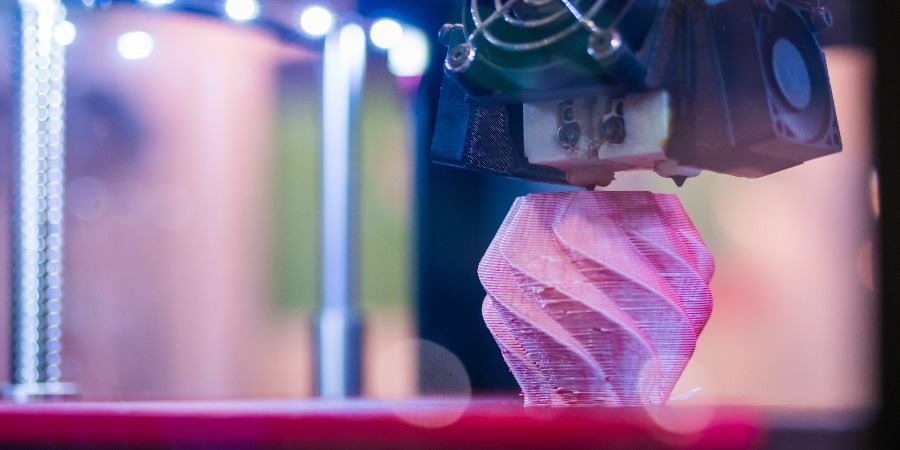
Manufacturers are constantly looking for new ways to optimize processes and become more lean, flexible, and agile to keep pace with mass customization customer demands. This includes investments in factory assets and machines customized to fit their needs and contribute to larger strategic goals.
Consumers are similarly intrigued by customized experiences, which are available through a plethora of purchasing options in today’s global marketplace. Manufacturers have both a challenge and opportunity to weave production lines with customization capabilities to achieve flexibility and agility.
Forward-thinking manufactures preemptively addressing this trend are turning to emerging technologies and one of the key combinations for customization is additive manufacturing and the digital thread.
Additive manufacturing (AM), sometimes referred to as 3D printing, is the process of creating physical objects in a layer-by-layer procedure. Traditionally, creating new parts or products is a timely and costly process due to the need to reconfigure manufacturing systems (production floors, assembly lines). The costs for both set-up and changeover times is a financial hit, especially for ‘one-off’ products. These inefficiencies cannot take place in today’s fast-paced world of customized products; additive manufacturing provides a solution.
Additive can quickly create new prototypes, parts, and products without massive manufacturing equipment overhaul. The cost savings can be significant even just on a ‘one-off’ basis; think of a machine malfunctioning and an on-site 3D printer creating a spare part for a technician to repair it in minutes. This drastically minimizes material, logistics, and downtime costs.
For additive manufacturing to reach its full potential it must be linked into the digital thread. In the example mentioned above, through IIoT and analytics we can now preemptively diagnose the machine’s failure and proactively take counter measures. Feeding this digitized information to the 3D printer in-tune with the machine’s digital definition (CAD, PLM, BOM), we can quickly manufacture the replacement part and negate any costly machine downtime.
IoT can also provide crucial performance data to create a closed-feedback loop for product designers; real-world product usage data is accessible via the digital thread for designers looking to create the next product iteration.
Artificial Intelligence is transforming industries, companies, and the roles within them. Product design and engineering functions are being equipped with AI-driven generative design tools where they can create higher performing and more efficiently made future product iterations. However, delivering these optimized product iterations (like the wrench below) come in forms with complex lattice structures and geometries that are challenging to manufacture with current machinery.

Additive manufacturing brings these innovative generative designs to life with its configurable layer-by-layer material printing. These optimized product designs substantially reduces scrap, materials used, and product weight, which has major implications for product development costs and real-world performance. Case in point, a GE Bracket redesigned through generative design was 75% lighter than the original design and also improved material yield stress.
Combining additive with generative design will also substantially reduce prototype overhead costs. Product designers can quickly manufacturer a prototype optimized by generative design through an on-site 3D printer. Rapid prototyping has downstream effects. It enables manufacturers to get new products to market faster than ever and meet the demands of increasingly shorter lead times. Polaris is using additive to quickly develop new parametric lattice structures in its products, which is creating new efficiencies.
Manufacturers will need an additive manufacturing strategy to keep pace with mass customization trends and competitive headwinds. Additive manufacturing combined with the digital thread provides an entryway for innovative technologies to become mainstream and empower collaboration across various roles. AM will physically revolutionize the factory floor, while the digital thread will unlock and scale its widespread impact across all operations.
David Immerman is a business analyst on PTC’s Corporate Marketing team providing thought leadership on technologies, trends, markets, and other topics. Previously David was an industry analyst in 451 Research’s Internet of Things channel primarily covering the smart transportation space and automotive technology markets, including fleet telematics, connected cars, and autonomous vehicles. He also spent time researching IoT-enabling technologies and other industry verticals including industrial. Prior to 451 Research, David conducted market research at IDC.
©Copyright 2025. All rights reserved by Modelcam Technologies Private Limited PUNE.